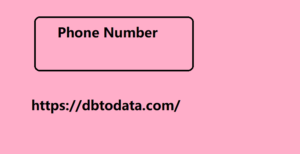In his enlightening Confab 2013 talk, content strategist Jon Colman posed three questions, which immediately became etched in my mind:
To answer question 1 – What do people appreciate? – for their organizations and clients, content strategists meet with stakeholders and users.
To answer question 2 – How do you know people like it? – Content strategists interview these stakeholders about their business goals and uncover users’ needs, wants, successes, and frustrations. Ideally, content teams then create content that talks about the things their stakeholders and users value.
To answer question 3 – How do you measure how much people like it? – content strategists turn to analytics.
In this article, I review the role of analytics in measuring the value people place on the things you think they value , then suggest some steps you can take to set up analytics that will help you. to appropriately categorize (tag) the right User Content .
In short, we’re about to explore how you can use analytics to make your content smarter.
Create a recipe for smart analysis
In this section, I examine the role of analytics in measuring the value people place on the things you think they value .
Imagine a recipe and culinary advice website, offering semantically categorized, structurally rich, reusable and adaptable content. Suppose this site offers personalized content to each of five user segments, displaying different views of the home page for each user depending on where they are in their journey.
It’s easy to make assumptions about what visitors to this site enjoy: well-written, tasty recipes and clear, simply written advice to make cooking easier or tastier. But we want to know that users like the things we assume they like, and we want to measure how mobile phone number database much they like these tips and recipes.
We can assume that a cook would value an image like this as part of a recipe web page. But how do you measure the value that cooks place on this kind of image? (Photo credit: jpl.me via Compfight cc )
In theory, we can look at the data. It is likely that the analytics team of our imaginary website has tons of stored data. All of this is just waiting for a content strategist to explore. But it’s so much data that it’s hard to know how to go about it. Content strategists know how important analytics are for learning customer behavior and optimizing sites. But where would you even start on such a complex and responsive site?
The very idea is enough to give you nightmares.
First, determine the right questions
A screen full of analytics data looks like a secret code, and in a way. This data contains a lot of information and it is impossible to understand it without the key. In other words, data can provide answers, but only if you ask the right questions .
The best way to start analytics for any site is to determine the site’s goals or the team’s questions about audience or site performance . Once the questions and goals have been identified, the team can set up an analytics program, such as Google Analytics or Omnigraffle, to retrieve specific data that will answer those goals or questions.

For example, if the team has identified a journey for Czech Republic Phone Number List users coming to the site from Twitter and wants to know how many people are taking that journey, they can configure the analytics system to track users coming from Twitter, and they can identify the exit. rate for each page of the trip. Alternatively, if the team wants to see how content from three microsites converts, they can track and compare bounce rates and click-through rates for all three microsites.
For a team working with intelligent content (specifically adaptive content or personalized content) – content that adapts to the user, device, location, time, etc. – the user journey includes touchpoints. In these cases, the system provides semantically classified content blocks.

